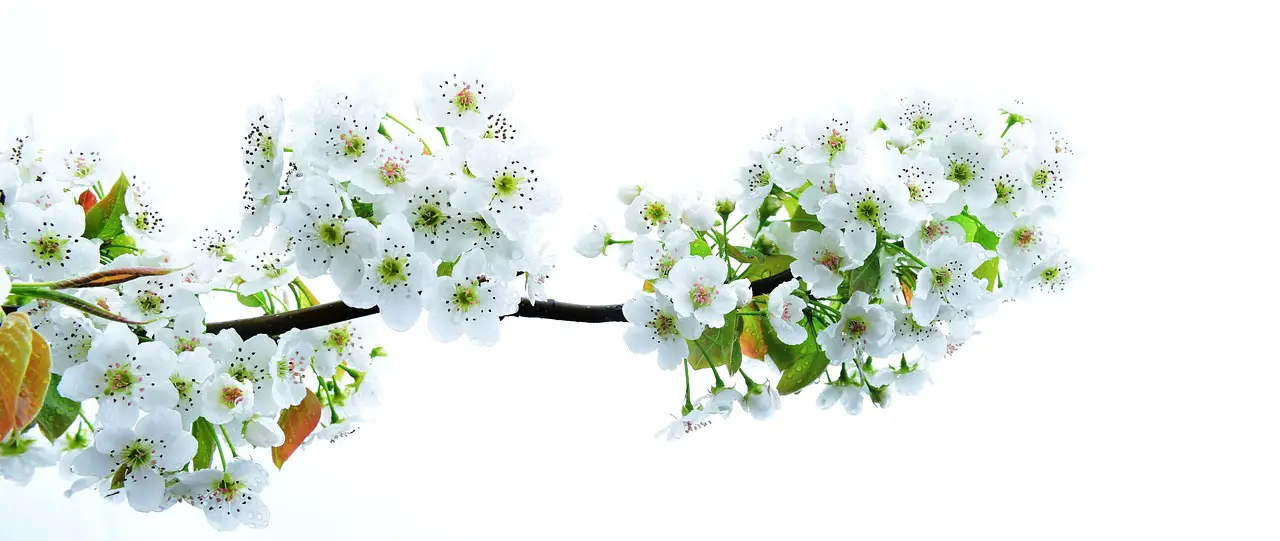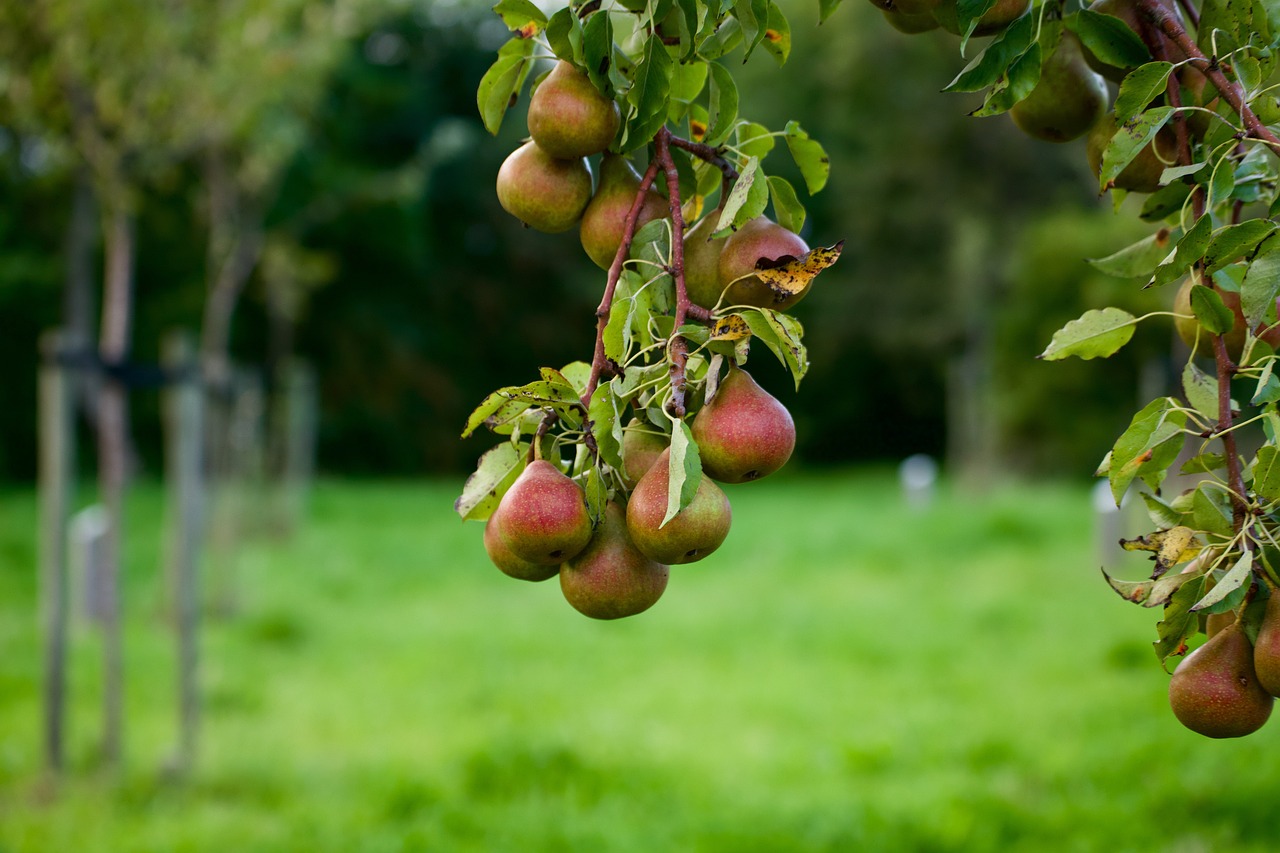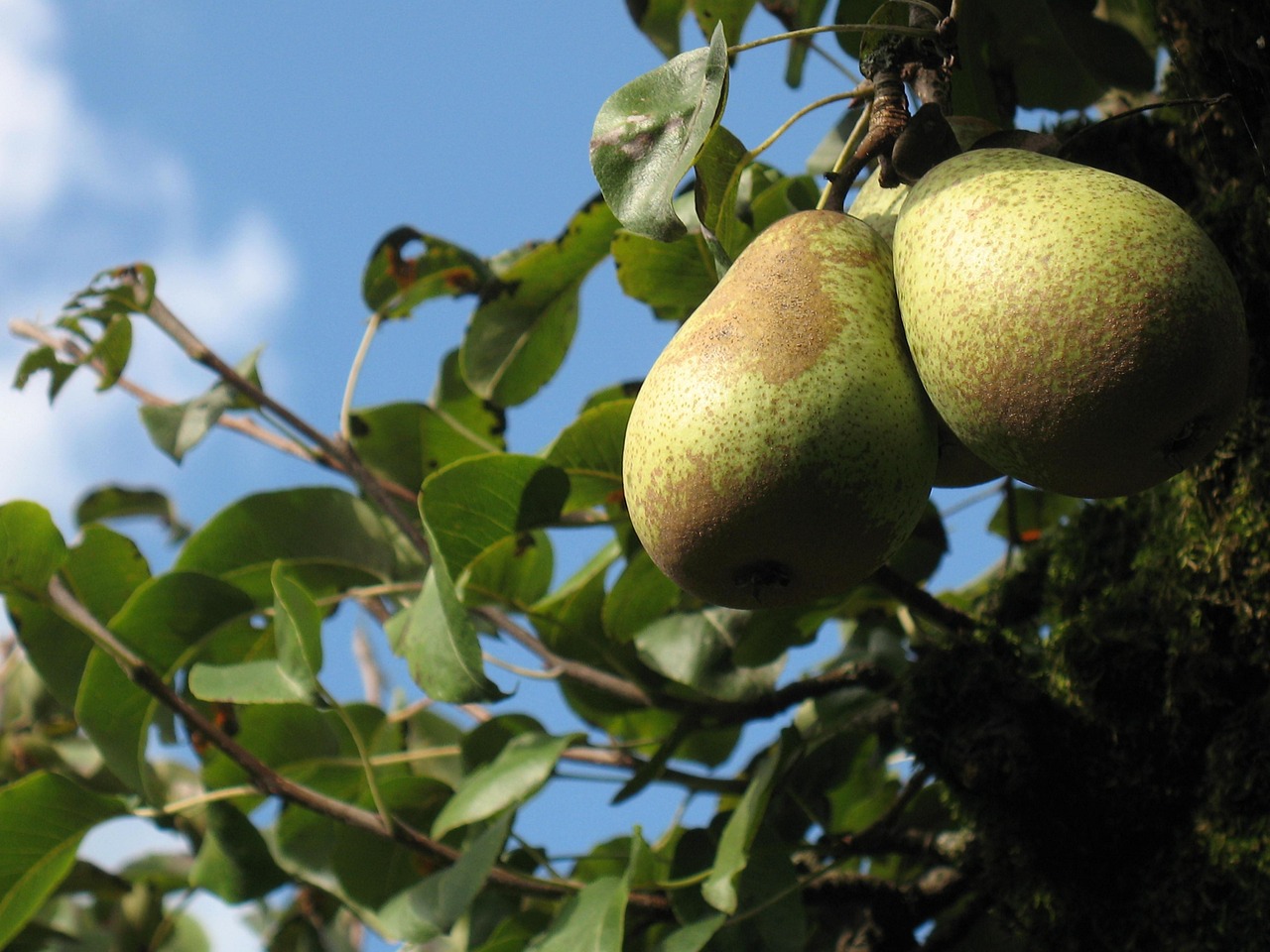Pear orchard pruning is essential for maintaining tree health, improving fruit quality, and enhancing yield. Effective pruning techniques can help home growers ensure their trees remain productive and resilient to pests and diseases.
Pear trees are a popular choice for home orchards due to their delicious fruit and beautiful blossoms. However, like all fruit-bearing trees, they require regular maintenance to thrive. Pruning is one of the most important tasks for pear growers. It not only shapes the tree but also encourages good air circulation and sunlight penetration, which are vital for healthy growth.

When performed correctly, pruning can significantly impact the overall productivity of the tree. The best time to prune pear trees is during their dormant season, which typically occurs in late winter or early spring, before the buds begin to swell. Understanding the specific needs of your pear tree variety is crucial, as different types may require different pruning methods.
Understanding Pear Tree Growth
Pear trees grow in various forms depending on the species and environmental conditions. Knowing how these trees develop will guide proper pruning techniques. There are two main types of pear trees: European and Asian. Each has its own growth habits and fruiting characteristics.
| Type of Pear | Growth Habit | Fruit Characteristics |
|---|---|---|
| European Pear | Tall, upright growth | Soft, juicy texture |
| Asian Pear | Wide-spreading growth | Crisp, apple-like texture |
European pears tend to have a more upright growth habit, which can lead to dense foliage. This density can inhibit air circulation and light penetration. Therefore, it is essential to thin out branches to promote a healthy structure. On the other hand, Asian pears have a broader spread and may require different management strategies to ensure each branch receives adequate sunlight.

Pruning Techniques for Pear Trees
Effective pruning involves several techniques that can be applied depending on the age of the tree and the desired results. Here are some essential methods:
- Thinning Cuts: Remove entire branches at their point of origin. This method helps reduce crowding and improves light penetration.
- Heading Cuts: Shorten a branch by cutting it back to a bud. This encourages bushier growth and can be used to control height.
- Removal of Dead or Diseased Wood: Regularly inspect your trees for any dead or diseased branches. Removing these promptly helps prevent disease spread and promotes overall health.
- Crown Thinning: Focus on removing inner branches that cross or rub against each other. This helps open up the canopy for better light access.
Each of these techniques serves a specific purpose in shaping the tree and supporting its health. It is essential to approach pruning with a clear plan based on the tree’s age and condition. For younger trees, establishing a strong framework is key. For mature trees, maintaining balance and productivity becomes the focus.
Tools Needed for Pruning
Having the right tools is crucial for effective pruning. Here are some recommended tools for home growers:

- Hand Pruners: Ideal for small branches and precise cuts.
- Loppers: Best for cutting branches that are too thick for hand pruners.
- Saws: Use a pruning saw for larger limbs that require more power.
- Rubber Gloves: Protect your hands from cuts and injuries while working.
- Ladder: For reaching higher branches safely.
Before starting the pruning process, ensure all tools are sharp and clean. Clean tools reduce the risk of spreading diseases between plants. After pruning, you may want to apply a wound sealant to larger cuts to help protect the tree from pathogens.
The proper use of these tools will enhance your pruning experience and lead to better results in your pear orchard. Remember that practice makes perfect; over time, you will develop a sense of how much to prune and when to do it for optimal results.
In summary, understanding the growth habits of pear trees, mastering essential pruning techniques, and utilizing the right tools will set you up for success as a home grower. With diligent care, your pear orchard can flourish and provide fruitful harvests for years to come.

Best Practices for Pruning Pear Trees
Pruning pear trees requires a thoughtful approach. To achieve the best results, consider the following best practices that can help ensure your trees remain healthy and productive.
Timing Your Pruning
The timing of pruning plays a critical role in the health of pear trees. Pruning during the wrong season can stress the tree and affect fruit production. Here are some key points regarding timing:
- Late Winter to Early Spring: This is the optimal time to prune most pear trees while they are still dormant. It is before the buds begin to swell and before the risk of severe frost has passed.
- Summer Pruning: Light pruning can be done in late summer. This helps control growth and allows for better light penetration without inducing excessive stress.
- Avoid Fall Pruning: Pruning in the fall can lead to new growth just before winter, making the tree vulnerable to cold damage.
Identifying Branch Types
Understanding the different types of branches on a pear tree is essential for effective pruning. Each branch type has specific characteristics and purposes:
- Main Leader: The central vertical stem that serves as the primary structure for the tree. It should remain intact and well-pruned for a strong framework.
- Lateral Branches: Side branches that grow off the main leader. These should be spaced evenly and pruned to maintain balance.
- Fruit Spurs: Short, stubby branches where flowers and fruit develop. Careful management of these is vital for fruit production.
By recognizing these branch types, you can decide which ones to prune and which to keep for optimal growth and fruiting.
Common Pruning Mistakes to Avoid
Even experienced growers can make mistakes when pruning. Avoiding common pitfalls can lead to healthier trees and better harvests. Here are several mistakes to be aware of:
- Over-Pruning: Removing too much foliage can stress the tree. Aim to maintain a balance of leaves and branches.
- Neglecting Tree Shape: Failing to maintain a balanced shape can lead to weak growth. A well-shaped tree promotes better sunlight exposure.
- Ignoring Disease Signs: Not removing diseased or dead wood can spread problems throughout the tree. Regularly inspect your trees for any issues.
- Improper Cuts: Making cuts at the wrong angle or too close to a bud can harm the tree. Ensure cuts are clean and made at appropriate angles.
Signs That Your Pear Tree Needs Pruning
Recognizing when a pear tree requires pruning is essential for maintaining its health. Here are some signs that indicate it may be time to prune:
- Dense Foliage: If the tree appears overly bushy, it may need thinning to improve air circulation and sunlight exposure.
- Crowded Branches: When branches are crossing or rubbing against each other, it is essential to prune them back to prevent damage.
- Poor Fruit Production: A decrease in fruit quality or quantity may signal that the tree needs rejuvenation through pruning.
- Dead or Diseased Wood: Any visible signs of disease, such as discoloration or decay, should be addressed immediately by removing affected branches.
The Role of Watering After Pruning
After completing your pruning tasks, proper watering is crucial for helping your pear tree recover from the stress of pruning. Here are some important watering tips:
- Irrigation Timing: Water your trees soon after pruning to help reduce shock and promote new growth.
- Adequate Moisture: Ensure that the soil remains moist but not waterlogged. Consistent moisture supports healthy recovery.
- Avoid Overwatering: Too much water can lead to root rot and other issues. Always check soil moisture levels before watering.
Fertilizing After Pruning
In addition to watering, fertilizing can also support your pear trees after pruning. Here are some fertilization strategies to consider:
- Selecting the Right Fertilizer: Use a balanced fertilizer high in phosphorus and potassium, which supports root development and fruit production.
- Timing Fertilization: Apply fertilizer shortly after pruning to provide necessary nutrients as the tree begins its growing season.
- Avoid Nitrogen Overload: Excess nitrogen can lead to excessive leaf growth at the expense of fruit production.
By following these practices regarding watering and fertilizing, you can enhance your pear tree’s recovery and ensure a bountiful harvest in the upcoming seasons.
Understanding Different Pruning Styles
Pruning styles can vary based on the desired outcome and the specific needs of pear trees. Each method has its advantages and can be applied according to the growth patterns of your trees. Below are some common pruning styles used by home growers.
Central Leader Pruning
The central leader pruning style is one of the most commonly used techniques for pear trees. This method involves maintaining a single main trunk, or leader, which supports the overall structure of the tree. Here are some key features of this style:
- Structure: The main focus is on developing a strong vertical leader with well-spaced lateral branches.
- Benefits: This style encourages better light penetration and air circulation throughout the tree.
- Pruning Method: Remove competing leaders and focus on the topmost shoot to promote upward growth.
Central leader pruning is ideal for European pear varieties, which tend to grow tall and upright. By emphasizing a single trunk, you can create a strong foundation for fruit production.
Open Center Pruning
Open center pruning is another effective method, especially for trees that naturally grow wider. This style encourages a more open canopy, allowing sunlight to reach all branches. Here are some points to consider:
- Design: This technique involves removing the central leader entirely, creating a vase-like shape.
- Advantages: Improved air circulation reduces disease risk and helps in even fruit ripening.
- Application: Best suited for Asian pear varieties that spread out more than their European counterparts.
By utilizing open center pruning, you allow your pear tree to grow in a way that maximizes fruit production while minimizing potential issues related to overcrowding.
Seasonal Care After Pruning
After pruning your pear trees, it is crucial to provide ongoing care throughout the growing season. This care will support recovery and ensure the best fruit yield. Here are some seasonal care tips:
Spring Care
During spring, your pear tree begins to wake from dormancy. Focus on these aspects:
- Monitor New Growth: Keep an eye on new shoots and leaves. This is a sign that your tree is responding well to pruning.
- Pest Control: Regularly inspect for pests such as aphids or scale insects. Early intervention can prevent infestations.
- Watering: Ensure adequate moisture levels, especially if spring is dry. Water deeply but infrequently to encourage deep root growth.
Summer Care
In summer, as the trees grow and develop fruit, consider the following:
- Thinning Fruit: If clusters of fruit develop, thin them out to improve size and quality.
- Pest and Disease Management: Continue regular inspections to catch any issues early. Use organic pesticides when necessary.
- Irrigation Adjustments: Maintain consistent watering schedules as temperatures rise. Ensure trees do not become water-stressed during hot months.
Fall Care
As fall approaches, preparation for winter becomes essential. Here are some steps to take:
- Final Watering: Water the trees adequately before the ground freezes. This helps them withstand cold temperatures.
- Mulching: Apply mulch around the base of the tree to retain moisture and protect roots from freezing temperatures.
- Pest Prevention: Clean up fallen fruit and debris, which can harbor pests and diseases over winter.
Pest and Disease Management
Pear trees can be susceptible to various pests and diseases. Understanding how to manage these issues is vital for maintaining tree health. Here are some common problems along with management strategies:
| Pest/Disease | Description | Management Strategies |
|---|---|---|
| Aphids | Tiny insects that suck sap from leaves, causing curling and yellowing. | Introduce beneficial insects like ladybugs. Use insecticidal soap if necessary. |
| Pear Scab | A fungal disease that leads to dark spots on leaves and fruit. | Apply fungicides during the dormant season and ensure good air circulation through pruning. |
| Coddling Moth | A common pest that burrows into developing fruit, causing damage. | Use pheromone traps or insecticides as needed. Thin fruit to reduce infestation risk. |
| Crown Gall | Bacterial disease causing galls or swellings on roots and stems. | Avoid wounding roots during planting. Remove affected plants promptly. |
A proactive approach to pest and disease management will help ensure that your pear trees remain healthy and productive throughout their growth cycle. Regular monitoring and timely interventions can make a significant difference in the overall success of your orchard.
Long-Term Care for Your Pear Orchard
Once your pear trees are pruned and established, ongoing care is essential for achieving the best fruit yield over the years. Long-term care involves several practices that help maintain tree health and productivity. Below are key aspects to consider:
Soil Management
Healthy soil is the foundation of a productive pear orchard. Consider the following soil management strategies:
- Regular Soil Testing: Test the soil periodically to determine nutrient levels and pH. This information will guide your fertilization strategy.
- Organic Matter Addition: Incorporate compost or well-rotted manure into the soil to improve its structure and fertility.
- Crop Rotation: If space allows, rotate with cover crops or legumes to enhance soil nutrients naturally.
Watering Practices
Proper watering is crucial, especially during dry spells. Here are some best practices:
- Drip Irrigation: Consider using drip irrigation systems to provide consistent moisture directly to the root zone while minimizing water waste.
- Monitor Weather Conditions: Adjust your watering schedule based on rainfall and temperature. Pear trees typically need about an inch of water per week during the growing season.
- Avoid Overhead Watering: Overhead watering can promote fungal diseases. Focus on watering at the base of the tree instead.
Mulching Strategies
Mulching around the base of your pear trees offers numerous benefits, including moisture retention, weed suppression, and temperature regulation. Here are some tips for effective mulching:
- Material Selection: Use organic materials such as wood chips, straw, or shredded leaves for mulching.
- Depth of Mulch: Apply a layer of mulch about 2 to 4 inches deep, keeping it away from the trunk to prevent rot.
- Replenish Regularly: Organic mulch decomposes over time, so be sure to replenish it annually for maximum effectiveness.
Harvesting Your Pears
Knowing when and how to harvest your pears is vital for ensuring quality fruit. Here are some guidelines for harvesting:
Determining Ripeness
Pear trees often produce fruit that ripens at different times depending on the variety. Here are some signs that pears are ready for harvest:
- Color Change: As pears ripen, their skin color transitions from green to yellow or a lighter shade, depending on the variety.
- Slight Softness: Gently squeeze the fruit near the stem; ripe pears should yield slightly but not be overly soft.
- Easily Detachable: When harvested, ripe pears should come off the tree easily without requiring excessive force.
Harvesting Techniques
When it is time to harvest your pears, use the following techniques to prevent damage:
- Use Clipping Tools: Utilize hand shears or pruners to cut the pears from the tree instead of pulling them off.
- Harvest in Dry Conditions: Pick pears during dry weather to minimize the risk of bruising and disease.
- Avoid Excessive Handling: Handle picked pears gently to prevent bruising and damage during transport.
Storing Your Pears
If you plan to store harvested pears, proper storage techniques can extend their freshness. Here are some tips for storing pears effectively:
- Cool, Dark Place: Store pears in a cool, dark area with good ventilation, such as a basement or refrigerator.
- Separate from Other Fruits: Keep pears away from other fruits to prevent ethylene gas exposure which can hasten ripening.
- Check Regularly: Inspect stored pears frequently for signs of spoilage and remove any affected fruit immediately.
Conclusion
Caring for a pear orchard involves more than just pruning; it requires understanding tree growth, managing soil health, monitoring pests and diseases, and implementing effective harvesting and storage practices. By following the guidelines outlined in this article, home growers can successfully cultivate healthy pear trees that yield delicious fruit year after year.
The journey of growing pears can be rewarding. With patience and diligence, your efforts will lead to bountiful harvests and an orchard that thrives in your backyard. Remember that every season provides new opportunities for learning and improvement in your gardening skills. Happy growing!
